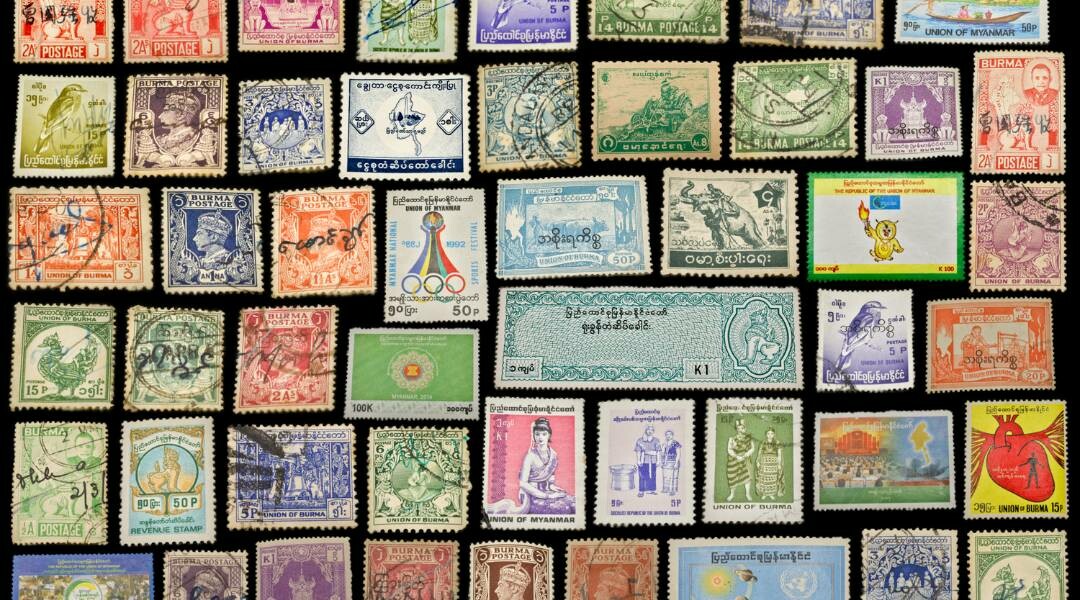Understanding the value of a stamp collection involves several key factors. You should assess each stamp’s condition, rarity, demand, and historical significance. For accurate pricing, consult specialized catalogs or seek an expert appraisal.
Remember to consider current market trends that influence collectible values worldwide. Whether you’re a seasoned collector or new to philately, grasping these elements can help determine your collection’s worth effectively.
Understanding Stamp Collection Basics
To value your stamps, start by checking the date they were made. Look for a tiny year on its face. Older ones can be worth more and are quite simple to grasp!
Next up is a rarity. Fewer copies mean higher values usually follow. Don’t forget about demand, too. Popular themes or historical events often hike prices significantly. Examine closely: does your stamp have marks? Stamps without postmarks, a ‘mint’ state, are prized by collectors and fetch nicer sums. Also, check if bits are torn or colors have faded. It drops their price down fast!
Lastly, see how unique features like errors might make them extra special, and that means extra dollars for you when selling!
Researching Current Market Prices
To check current stamp prices, start with catalog listings. These books list stamps and give a price based on condition. Yet, real-world values can shift. They often do!
Look at auction sites to see what similar stamps are selling for today. Track several sales over time to get the best sense of value trends. Prices rise and fall like waves in the sea but reveal much if watched closely. Online forums also help. Collectors may share recent sale details that could guide you in valuing your own pieces accurately.
Remember, market knowledge is key for an honest stamp collection appraisal.
Identifying Rare Stamps in Collections
When you dig into your collection, look for stamps that stand out. A good find might be the 1910 2d Tyrian Plum, which fetched a hefty £48,300 at auction. The gems are often old and rare, with rich stories. They fetch more than newer-stamp peers in decimal currency.
Check them out: crisp perforations hint at a higher worth than neat cancellations marking date or place. These touches can up their value notably. Watch for hinges. Those tiny papers stuck to some; if they’re there, worth dips sharply even after removal!
Keep the original adhesive safe by leaving it untouched to keep its full value clear. Remember this too: In France? Use Yvert and Tellier resources.
For American treasures, Scott’s specialized catalog is key. They help pinpoint stamp identities and issue dates from within library walls without cost. Unsorted collections charm beginners, but seasoned dealers usually pass. Sorting takes time; most won’t spare it, but who knows what rarity lies hidden inside those unassuming piles of postage?
Assess Condition and Grading Standards
When you assess a stamp’s condition, think about its grade. They range from “superb” to “below average.” Stamps that score less than “good” aren’t seen as valuable for collections. A tiny tear or fade can change worth fast.
So, eye each piece sharp and close. If it looks worn or has marks, know this will hit the value hard. Don’t guess your stamps’ grades. Get an expert’s eyes on them, someone trusty who knows what sells best and how to sell if need be.
Cataloging Your Stamp Inventory Thoroughly
When cataloging your stamps, details matter. Check for hinge marks; light ones are okay on older issues pre-1890, but heavy or multiple applications devalue the stamp. Margins hold value, too; ‘superb’ examples have generous, even spaces all around.
For a high-valued piece, ensure perforations don’t touch the design and look out for balanced edges. Cancellations should be clear yet not obscure crucial parts of the stamp’s designs. The balance is key here. Damages like creases or tears can greatly reduce worth unless it’s a rare find.
Careful with color changes due to sun or water. They influence price significantly! Always aim for ‘fine’ conditions across these aspects to maintain or boost your collection’s market value.
Exploring Online Auctions: Florida Scene Insights
Dive into Florida’s online auctions, and you’ll find a vibrant market teeming with stamp enthusiasts. Here, vintage stamps often fetch high prices due to their history and rarity. Look for local auction trends, especially mid-century commemorative issues that tend to soar in value when featuring iconic Florida imagery or postmarks.
Experts suggest checking the completion rates of these auctions. Many reports show that over 75% of listed stamps sell, a testament to the area’s active collectors’ community. When valuing your collection before sale, factor in this regional demand specifically. Collections boasting Floridian heritage can command premiums above standard catalog values because they resonate more personally with bidders within that state.
Estimating Value for Insurance Purposes
To estimate your stamp collection’s insurance value, check each stamp closely. Look for rare ones. These can fetch thousands of dollars if in mint condition, with no flaws or marks on the back. Most stamps don’t hold much worth, but remember, commemorative and special-issue types are sought after by collectors and could offer substantial value.
Definitive stamps, printed longer and common, usually carry less value unless they’re old and scarce. Catalogs give price ideas, yet expect lesser amounts if yours aren’t perfect. Keep an inventory with photos to prove ownership. A must for precise valuing without needing a mandatory appraisal at American Collectors Insurance. Consider getting insured. It signifies that you treasure your collection deeply!
Determining the value of a stamp collection hinges on factors like rarity, condition, and demand. Seek expert appraisals for accuracy or utilize reliable catalogs for self-assessment. Remember that market trends fluctuate. Keep abreast with current values through trusted auction houses such as Blackwell Auctions. We offer professional guidance to ensure your treasured stamps are evaluated fairly, maximizing their potential worth whether you choose to sell or cherish them as part of your growing collection.




